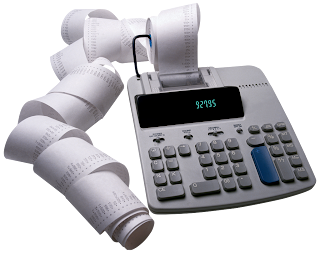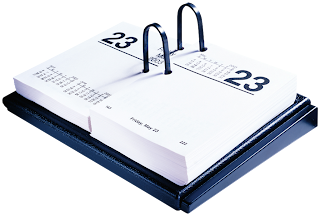
San Francisco living is great – many of us are fortunate to live in beautiful, historic buildings that are just bursting with character. Another thing that’s bursting is our closets. With more clothing and belongings than ever before, it can be a constant struggle to find places to put all our “stuff,” especially in closets that were designed twenty-five, fifty, or a hundred years ago. Our lives, and our storage needs, are very different than our predecessors, yet if we want to live in San Francisco, we have to devise ways to shoehorn our belongings into closets that were designed for wardrobes from a bygone era. But how do you fit a modern wardrobe into a Victorian-era closet? I’ve got a few ideas for you.
The first step is to get rid of what you don’t need – that way, you can see exactly what you need to find storage space for. One of the best ways to do this is to take everything out of your closet, and start sorting it into piles. I like to recommend that my clients create piles for “Keep” (things you definitely wear), “Sell” (things that you can probably make money by selling at used clothing stores), “Donate” (things that are usable but that you probably can’t sell), “Trash” (things that nobody will want or be able to use), and finally a “Don’t Know” pile, for things you’re not sure what to do with. The “Keep,” “Sell,” “Donate,” and “Trash” piles are pretty straightforward, but what about the “Don’t Know” pile?
“Don’t Know” is for items that you like, but never wear or use. If you really can’t part with that $300 dress that you never wore, and you can’t bear to give up those soccer cleats for that league you were planning on joining two years ago, put those items into a box, and seal the box with tape. If you haven’t opened the box to use those items in six months, it’s time to sell, donate or trash those items, because chances are you won’t be using them anytime soon.
So how do you store everything that went into your “Keep” pile effectively in your tiny San Francisco closet? The key is to maximize every available inch of storage space in the closet. Look up, look down, look all around, and you’ll find that there just might be a lot more potential storage space in your closet than you originally may have thought. I’m often surprised at just how much storage space there can be in a closet - you just have to be creative about how you use it.
For instance, if your closet has only one rod, you can gain 50% more storage space by hanging another rod. Closet rods are available inexpensively at local hardware stores, and if you don’t want to install one permanently, you can get a removable secondary rod that hangs down off of your primary rod (I often suggest these to renters). No space in your room for a traditional dresser? Try some plastic, stackable drawers that you can use to fit in the floor space under where your clothes hang. I highly recommend the transparent or semi-transparent drawers rather than the opaque ones, because it’s very convenient to be able to see what’s in your drawers without having to actually open them up. If you have shelves above your closet rod, you can fold and stack sweaters and shirts, or use the space for transparent shoe boxes, which stack nicely. Don’t ignore the space behind the closet door, which can be a great spot for hanging a shoe rack, accessories organizer, or for installing a hook to hang long items such as coats and dresses.
San Francisco living is great – many of us are fortunate to live in beautiful, historic buildings that are just bursting with character. Another thing that’s bursting is our closets. With more clothing and belongings than ever before, it can be a constant struggle to find places to put all our “stuff,” especially in closets that were designed twenty-five, fifty, or a hundred years ago. Our lives, and our storage needs, are very different than our predecessors, yet if we want to live in San Francisco, we have to devise ways to shoehorn our belongings into closets that were designed for wardrobes from a bygone era. But how do you fit a modern wardrobe into a Victorian-era closet? I’ve got a few ideas for you.
The first step is to get rid of what you don’t need – that way, you can see exactly what you need to find storage space for. One of the best ways to do this is to take everything out of your closet, and start sorting it into piles. I like to recommend that my clients create piles for “Keep” (things you definitely wear), “Sell” (things that you can probably make money by selling at used clothing stores), “Donate” (things that are usable but that you probably can’t sell), “Trash” (things that nobody will want or be able to use), and finally a “Don’t Know” pile, for things you’re not sure what to do with. The “Keep,” “Sell,” “Donate,” and “Trash” piles are pretty straightforward, but what about the “Don’t Know” pile?
“Don’t Know” is for items that you like, but never wear or use. If you really can’t part with that $300 dress that you never wore, and you can’t bear to give up those soccer cleats for that league you were planning on joining two years ago, put those items into a box, and seal the box with tape. If you haven’t opened the box to use those items in six months, it’s time to sell, donate or trash those items, because chances are you won’t be using them anytime soon.
So how do you store everything that went into your “Keep” pile effectively in your tiny San Francisco closet? The key is to maximize every available inch of storage space in the closet. Look up, look down, look all around, and you’ll find that there just might be a lot more potential storage space in your closet than you originally may have thought. I’m often surprised at just how much storage space there can be in a closet - you just have to be creative about how you use it.
For instance, if your closet has only one rod, you can gain 50% more storage space by hanging another rod. Closet rods are available inexpensively at local hardware stores, and if you don’t want to install one permanently, you can get a removable secondary rod that hangs down off of your primary rod (I often suggest these to renters). No space in your room for a traditional dresser? Try some plastic, stackable drawers that you can use to fit in the floor space under where your clothes hang. I highly recommend the transparent or semi-transparent drawers rather than the opaque ones, because it’s very convenient to be able to see what’s in your drawers without having to actually open them up. If you have shelves above your closet rod, you can fold and stack sweaters and shirts, or use the space for transparent shoe boxes, which stack nicely. Don’t ignore the space behind the closet door, which can be a great spot for hanging a shoe rack, accessories organizer, or for installing a hook to hang long items such as coats and dresses.
So if your closet is currently on overflow, don’t despair. Use a few tips that I’ve suggested, and your closet will soon be your friend.
_Joshua Zerkel
-
Joshua Zerkel, Organizing Expert, helps busy people save time, space and money by getting organized at home and at work. For more FREE organizing ideas, visit www.customlivingsolutions.com/ or call 415-830-6345.
© 2005 Joshua Zerkel and Custom Living Solutions. All Rights Reserved.
Joshua Zerkel, Organizing Expert
Custom Living Solutions
www.customlivingsolutions.com
joshua@customlivingsolutions.com Tel. 415-830-6345


























